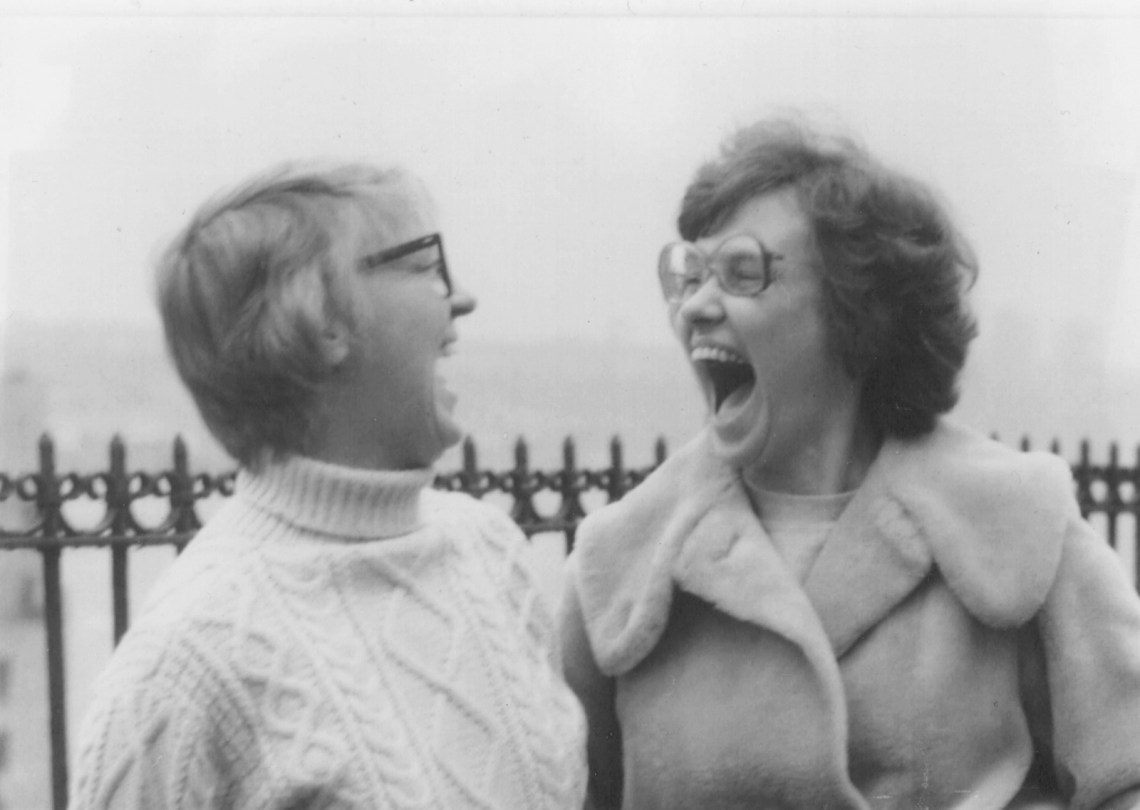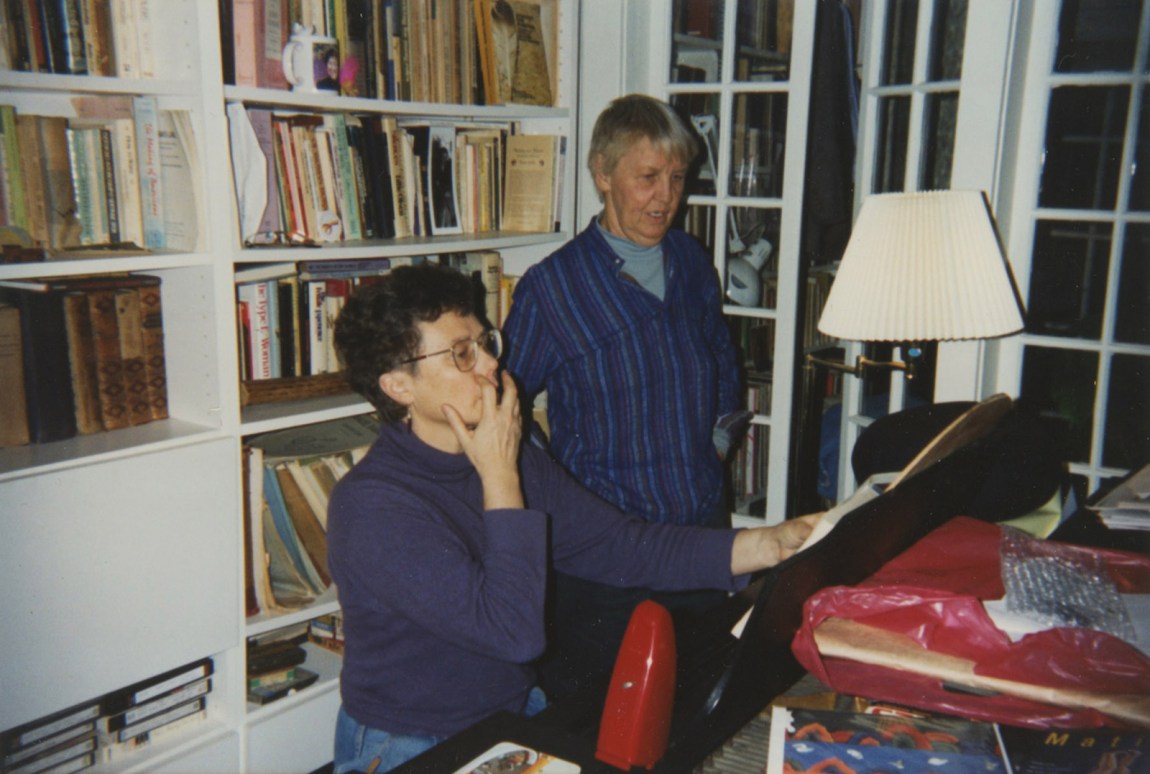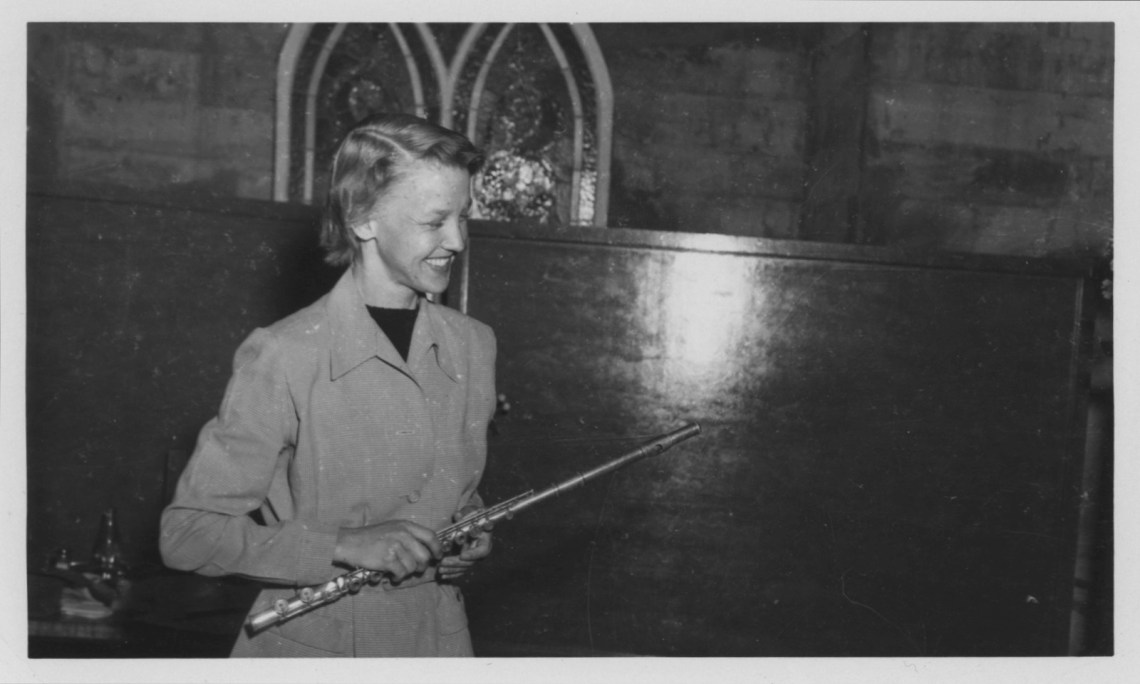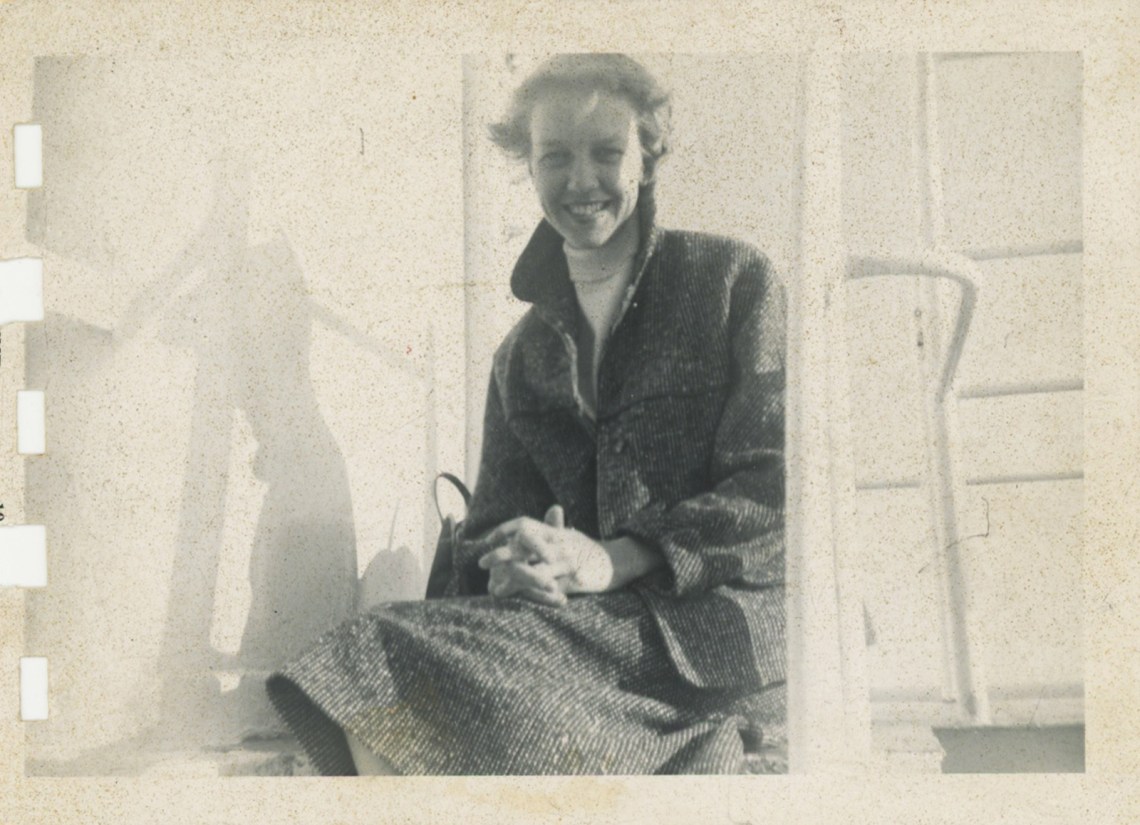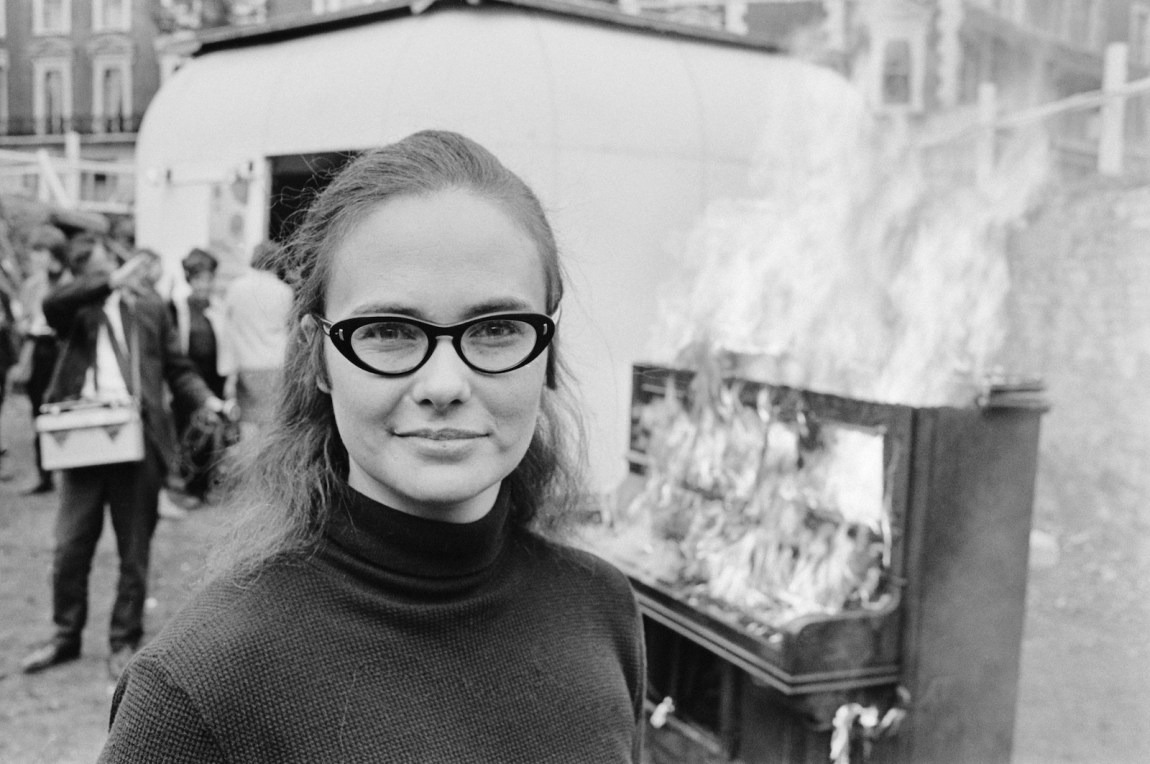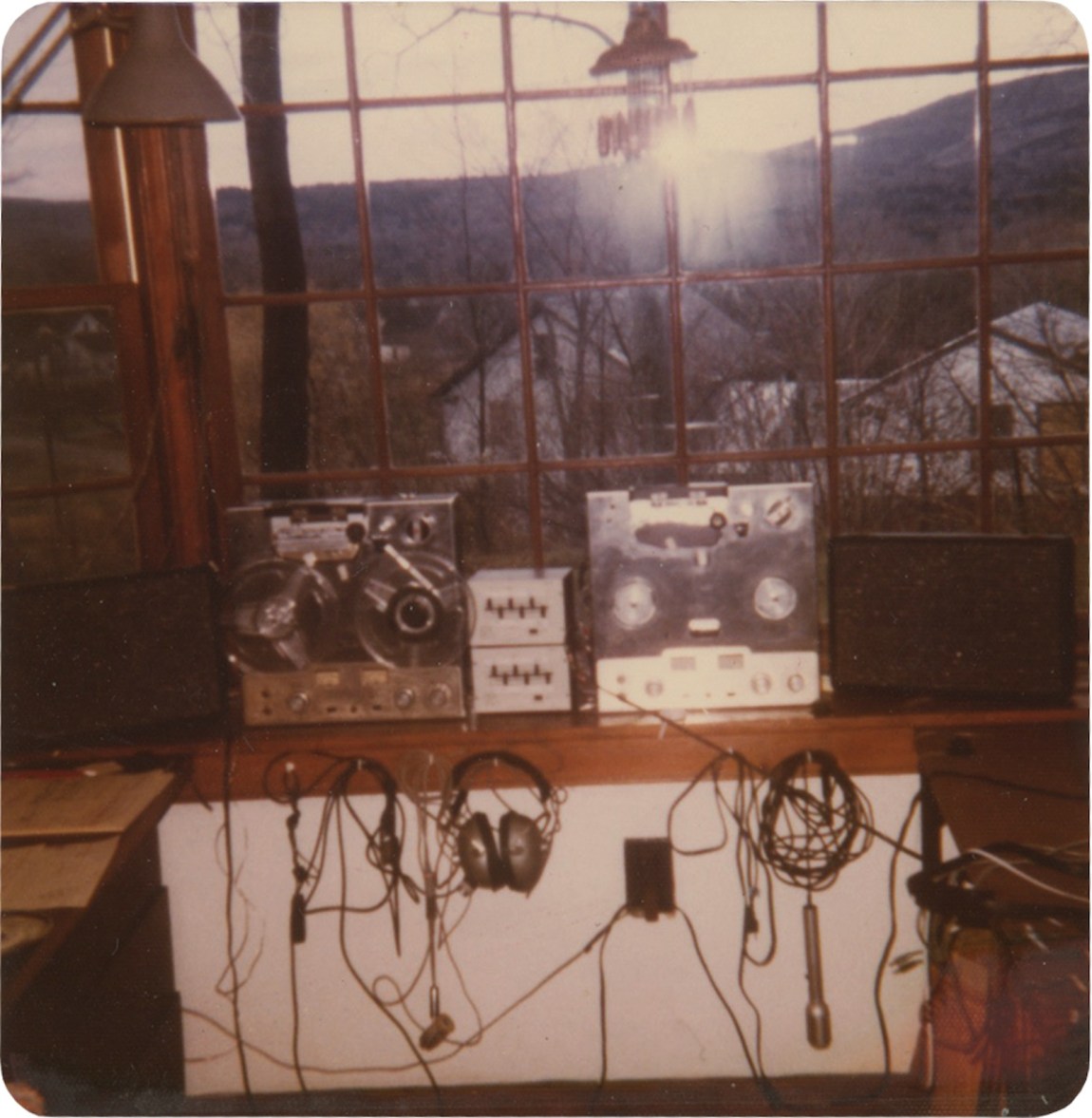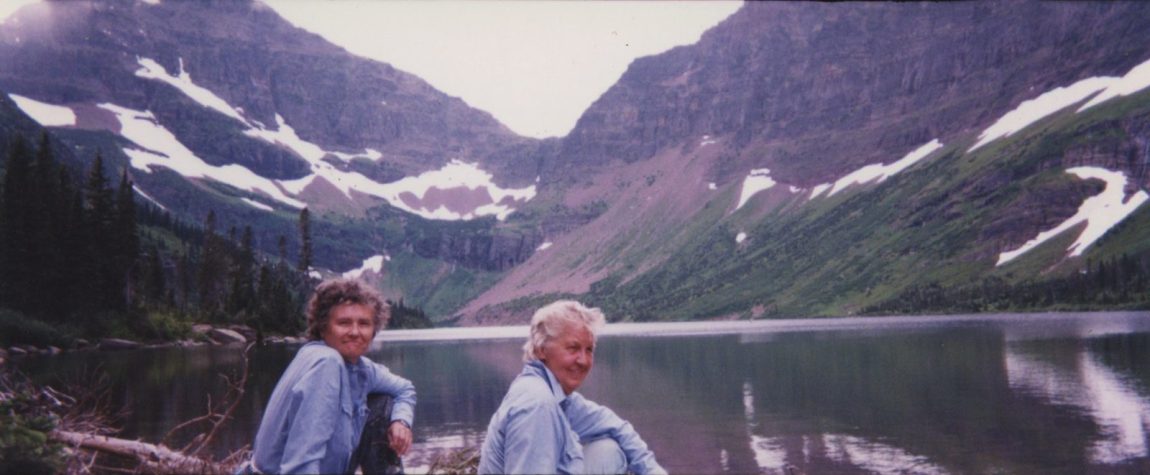The 1960s and 1970s were a rich time for the Western musical avant-garde. By midcentury, conventions of melody, harmony, and rhythm had already been challenged by innovations like Arnold Schoenberg’s twelve-tone technique, which had effectively done away with the dominant-tonic relationship—the interplay of consonance and dissonance which creates a feeling of relaxation of tension at the end of a song—that had provided the basis for Western music for centuries. Some artists went so far as to foreground long periods of silence, the ambient sound of the audience, and randomized noise, as well as to incorporate chance into the composition process. John Cage famously wrote scores based on divinations from the I Ching, and in his best-known piece, 4’33”, the performer sits still. In Europe, Karlheinz Stockhausen was among those investigating the wonders of electronic music using devices like filters, modulators, and tape machines in orchestral works.
The changes weren’t limited to the concert hall. Preservationist labels were making music from non-Western traditions more readily accessible to artists looking for distant inspiration. Harry Partch adapted the stagecraft of Greek musical dramas and Lou Harrison experimented with gamelan music from Java. Avant-garde jazz musicians like Sun Ra and the Art Ensemble of Chicago blurred the line between improvisation, theater, and visual spectacle; they often appeared onstage as characters in costumes and, in some cases, wearing face paint. Members of the Fluxus movement, like Yoko Ono and La Monte Young, wrote scores that consisted of instructions, such as drawing a line thirty times or feeding a piano a bale of hay.
The avant-garde music of the time was aesthetically inclusive. Composers gave performers more leeway with interpretation: some of Stockhausen’s graphic notations could be read backward and forward. Older hierarchies of instrumentation were cast aside: Christian Wolff’s For 1, 2, or 3 People could ostensibly be performed on any combination of instruments. White men, however, still received much of the critical interest, as well as record deals. Among those overshadowed was a cluster of female composers—including Pauline Oliveros, Laurie Spiegel, and Éliane Radigue—who worked primarily with electronic instruments. They have only recently begun to receive some of the attention they deserve, thanks in part to Lisa Rovner’s documentary Sisters with Transistors (2020).1
Ruth Anderson and Annea Lockwood were central figures within this cohort. Anderson combined recordings of the voice with computer-produced pure notes or frequencies called sine tones to make minimalist compositions. Lockwood is best known for arrangements of field recordings: sound documents of naturally occurring phenomena. Both pushed listeners into states of greater attentiveness, whether by slowly shifting electronic tones or fashioning an aural portrait of a running river. Though not typically scored in the traditional sense, their compositions have the structural rigor of a symphony and the loose intimacy of a folk song.
Lockwood and Anderson lived together for close to five decades—their lives “joyously entangled,” as Lockwood described it in a recent interview for The Wire—until Anderson’s death in 2019. A palpable sense of intimacy occasionally comes through in their work: the sound of Anderson’s breathing in her I Come Out of Your Sleep (1979, revised 1997); the unsettling eroticism of Lockwood’s Tiger Balm (1970),2 which is built around a recording of a purring cat. A recent release makes their love more explicit. Tête-á-Tête (2023) features two compositions by Anderson, one on each side of an LP: Resolutions, a computer piece comprised of slowly descending sine tones, and Conversations, a tape collage made as a gift for Lockwood. A separate ten-inch is given over to Lockwood’s field recording and electronics piece For Ruth, an elegy for her life partner. The gatefold sleeve is decorated by pictures of the two artists laughing together.
*
Ruth Anderson was born in 1928 in Kalispell, Montana. She began playing flute at an early age and in her teens led a small orchestra and choir that performed light classical music—even though she was warned that “women aren’t conductors.” At first she pursued a career as a flutist and composer, studying at the University of Washington and later, privately, with Jean-Pierre Rampal, possibly the century’s best-known performer on the instrument. After graduating, she was awarded two Fulbright Scholarships to travel to Paris, where between 1958 and 1960 she studied with Nadia Boulanger and Darius Milhaud, many of whose students went on to join the forefront of the midcentury avant-garde. Anderson returned to America in 1962 to enroll in Princeton University as one of the first four women admitted to its graduate program in composition.
By the mid-1960s, she was the lead flutist with the Boston Pops and was playing with other mainstream orchestral groups, as well as orchestrating and arranging for televised versions of musicals like Annie Get Your Gun and Show Boat. Her virtuosity caught the attention of a pioneer of electronic music, Vladimir Ussachevsky, who invited her to the fledgling Columbia-Princeton Electronic Music Center (CPEMC)—he needed someone to fix a wrong note in a tape piece made from flute recordings. Unlike today, when there are any number of plug-and-play software programs to help an aspiring laptop DJ, electronic music in the late 1950s took committed study and technical acumen. At workshops like CPEMC, students learned to operate technologies such as reel-to-reel tape machines and analog synthesizers, like the room-sized RCA Mark-II.
Advertisement
Anderson thereafter largely abandoned acoustic instruments and devoted herself to electronics. Her work in the medium balances intelligence and intuition, distinguishing it from that of contemporaries like Milton Babbitt, James Tenney, and Kenneth Gaburo, who used technology to create music that was too fast, too dense, too precise for the human apparatus alone—a kind of alien sound. Though carefully constructed, Anderson’s pieces do not make their complexity obvious. She gives the material room to breathe, slowing the tape to a human speed and often using the human voice. One image or idea follows another, as in a conversation. Rarely are two sounds the same; repetition, she seemed to suggest, is a poor substitute for evolution.
Consider Anderson’s earliest tape piece, The Pregnant Dream (1968), which is made from a reading of May Swenson’s poem of the same name. The first line is spoken alone: “I had a dream in which I had a dream…” After that, while continuing to read the poem, she adds layers of the same recording, slightly offset, as if in a fugue, for almost two minutes. With each repetition of “dream,” the listener latches onto its plosive opening d-, making its recurrence a sort of mantra or command. Every line maintains its clarity and the voice retains its irregularity. This contrasts with other pieces built from the same idea, most notably Alvin Lucier’s I Am Sitting in a Room (1969), in which the artist recorded his voice running a kind of metacommentary:
I am recording the sound of my speaking voice and I am going to play it back into the room again and again until the resonant frequencies of the room reinforce themselves so that any semblance of my speech, with perhaps the exception of rhythm, is destroyed.
Over time, his stuttered reading is sonically modified to the point that it almost transforms into a pure electronic tone. If Lucier concentrates on the physics of sound, Anderson focuses on its poetry.
Anderson continued to work with tape and synthesizers throughout the 1970s. The stereo sound in her So What (1971) moves from left to right and back again, giving the sense of a sci-fi landscape. SUM (State of the Union Message) (1973, revised 1997) is a collage of schmaltzy music, commercials, applause, and snippets of television shows. The tape piece I Come Out of Your Sleep (1979, revised 1997) makes the human breath sound like an otherworldly wind. In 2020 these three early pieces were released alongside two others by Arc Light Editions—Anderson’s first-ever solo recording. Otherwise, her individual compositions were only published on collections such as 1750 Arch Records’s New Music for Electronic and Recorded Media (1977).
*
Anderson joined the faculty at Hunter College in 1966 and founded its electronics studio in 1968, for which she procured, installed, and mastered the instruments over the next twenty-one years. It is here in 1973 that she met a young composer named Anna Lockwood (the “e” would be added later), who had been suggested as her replacement for a sabbatical. Lockwood was by then already a star in the contemporary music world. Born in Christchurch, New Zealand, in 1939, she was exposed to music at an early age. Her mother was a pianist whose compositions combined fairy stories with Dalcroze, or eurhythmic, movement; her father was an avid listener of classic orchestral and vocal works. Lockwood identified as a composer early on. She studied at a local university that employed a conservative, British pedagogy. “I don’t think I even heard [Anton] Webern when I was going through my bachelors,” Lockwood told me during a phone interview. “No. Christchurch was on hold.”
Lockwood moved to London in 1961 to enroll at the Royal College of Music. She immersed herself in the European contemporary music scene, attending summer courses at the Darmstadt School in Germany, where students were exposed to radical music by Cage, Stockhausen, and Olivier Messiaen, who transcribed and orchestrated birdsong. Lockwood first went there in 1962, when she heard the premiere of Epitaph für Aikichi Kuboyama (1962), a composition for spoken voice and electronics by the German music theorist Herbert Eimert. The experience changed her life. She told me that it gave her the feeling that “sound is actually in my hands. I can mold it. I can shape it.”
Advertisement
By the time she met Anderson, Lockwood had premiered and recorded her first major work, a piece for glass instruments called Glass World of Anna Lockwood (1970), which was reissued last year by the Australian label Room 40. It tiptoes through the fragile medium’s sonic landscape: the tinkling of glass against glass, the resonance of large sheets gently struck, the multitude of tones made by rubbing. Meanwhile, she had been working on her Piano Transplants, a quartet of sound works—Piano Burning (1968), Piano Garden (1969–70), Piano Drowning (1972), and Southern Exposure (1982)—in which performers respectively burn the instrument, bury it underground and plant trees around it, partially submerge it underwater, and attach a ship’s anchor to it. (The prompt for Piano Burning: “Play the piano as long as you can as it combusts.”) Some pieces are full of sonic incident, as when burning high-tension wires explode. Others are conceptual: flora might grow over the instrument in Piano Garden.3
Lockwood was always interested in natural sounds, whether a cat’s purr or a crackling fire. In her later work, however, she left behind the studio and performance space to make field recordings in nature itself. World Rhythms (1975) opens with a pulsar in the Vela Supernova, which rattles vivace in the left channel while ocean waves lap a slightly under-tempo andante in the right. Over the course of forty-six minutes, more common sounds—birds chirping, geysers erupting, fire flickering—are interjected at regular intervals as a counterpoint, as if these natural phenomena were sections in an orchestra.
Lockwood developed her work with field recordings over the next fifty years. She was particularly drawn to waterways, creating “Sound Maps” of the Danube, Housatonic, and Hudson rivers. (Lockwood and Anderson spent most of their life together in a house in Peekskill, on the east bank of the Hudson.) These long pieces, often presented as gallery installations, combine recordings made above and beneath the water’s surface with interviews of people whose lives are intertwined with the rivers. The result is a kind of eco-composition: a narrative in sound that evokes a river’s grandness and registers its alternation between calm and agitation. A version of “A Sound Map of The Danube” (2005) was mounted in 2020 at Experimental Sound Studio in Chicago; it ran on a loop beside a large map, which showed timecodes of the recordings and interviews, which the audience could use to follow the waterway from source to outlet.
*
Lockwood was nervous about the prospect of subbing for Anderson back in 1973. Having never dealt with the complex, voltage-controlled instruments, she worried about not being able to help the students. She was hired on the spot, however, and invited, with her then-husband, to Anderson’s house in New Hampshire to hash out the details. Lockwood and Anderson fell in love that weekend and quickly began a relationship.
They dedicated themselves to educating students—Anderson at Hunter and Lockwood at Vassar—about electronic music, especially the work of female composers. They also co-taught a course at Hunter on the subject, titled “Living Women, Living Music.” In 2021 they published Hearing Studies, a set of twenty-six written exercises aimed at expanding a listener’s attention. Here is one by Anderson:
In a darkened room, find a comfortable, totally relaxed position.
Listen to a piece of music.
Think of someone you love.Do not think of the music.
When you find your thought of the person is gone,
bring it back gently.
Let other thoughts come, and then let them go.
…
You will find explanations of the person—the music will explain the person.The music ideas, counterpoint, extensions, contrasts, repetitions, variants,
Rhythms, textures, qualities of sound, all music elements are of the person,
…You will find after, an understanding of the person you did not have, and a personal relationship to the music.
The couple shared an interest in sound’s corporeal effects. Along with two friends, they hosted vocal sessions at the Hunter studio, inviting others to sit in the middle of the quartet as it sang a “vocal unison with minimal harmonics.” By concentrating on whatever ailed their guests, Lockwood told me, they felt the sound made could help with the healing process.
Lockwood and Anderson had released dual recordings before, notably Sinopah (1998), which features Lockwood’s World Rhythms and Anderson’s I Come Out of Your Sleep. Tête-á-Tête is unique, however, for containing audio love letters they made for each other. In Resolutions, Anderson’s last fully electronic composition, over seventeen minutes a pair of sine tones make an impossibly smooth descent from high to rumbling low pitches, gliding through every note (and microtone) along the way. The concept might be simple but it’s complex to execute. Anderson wrote a computer program that determined how the tones sounded, then fed it parameters for how they moved. The slow velocity makes the listener doubly attuned to the tonal descent—an experience that mysteriously increases one’s awareness of gravity—until the pas de deux brings a tangible feeling of softness and warmth.
The rest of Tête-á-Tête is based on phone calls clandestinely recorded by Anderson during her first year together with Lockwood. She hoped to use these secret recordings to make a gift—a sound ode to those first days of love. Conversations (1974) is made up of quick edits of the calls set against slowed-down recordings of sarsaparilla-tinged Tin Pan Alley tunes, the titles of which suggest ardent desire: “You Beautiful Doll”; “Yessir, That’s My Baby.” Sighs occur in brisk succession followed by the drunken piano’s rolling chords and saccharine melody. Flurries of “um”s and “ohhh”s and laughter create a groove that lulls the listener before the sharp attack of the keys. You can’t help but be caught up in the silliness of it all.
After Anderson’s death, Lockwood used those same calls to make For Ruth. She sets longer fragments of conversations against each other in a sort of call and response: “Can we?” “Yes.” “We can?!” “Ohh, yes!” The piece is melodic, slower, and less rhythmic than Conversations. Lockwood surrounds the voices with quiet field recordings made around Hancock, New Hampshire, where the two lived early in their relationship. The sounds of nearby waterways are captured vividly, weaving themselves around the intimate conversation like strings supporting a vocal duet.
*
I first met Annea Lockwood in 2017, when we collaborated on a solo trumpet piece. We rehearsed every few weeks for almost a year at Brooklyn’s Issue Project Room. Each session was a mixture of performance, critique, and conversation; together we built a musical language made up of my playing and her responses. As the solo, Becoming Air,4 found its footing, our talks grew looser and the creative process evolved into bouts of palavering.
Once I premiere a piece with a composer, we usually move on to our next projects, staying in contact only to negotiate future performances. But Annea and I kept up our friendship. Our chats have become a way for us both to reset: virtual studio visits, therapy sessions, and book recommendations, punctuated by stories about Ruth. One that I often recall involves the system the couple developed for letting each other know when they were deeply immersed in work: “We would each have a colored scarf; one was blue, and one was red. A sort of light fabric silk. And if either of us was wearing her scarf, the other one knew to say nothing, ignore her completely, because she was working.”
Last summer, Annea hung Ruth’s scarf in the nook of a linden tree on the summer property they shared by Flathead Lake, in Montana. It was her last visit there, before handing the property over to Ruth’s family. Annea only heard the call of one loon during the trip, unusual for that time of year. Her initial response was sadness: Ruth loved hearing the loons and the fish breaching. “I was on the verge of saying ‘ohhhhh,’” she told me. “But then I remembered that Ruth hated repetition.”


